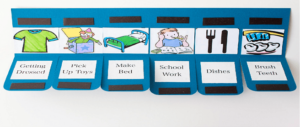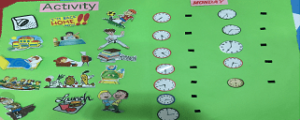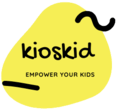What is Visual Scheduling?
Visual scheduling is a systematic technique that enhances the children’s with or without disability their learning, organising self, communication, and understanding with their day to day activities. It is not only used in communicating the upcoming action or daily task which needed to accomplished but also through visuals; they learn the required steps in completing the activities.
It is the right way of teaching the kids because we all are aware that Children are good Visual Learners.
Whether it is children, adolescents, or adults, everyone needs to keep themselves organise, and for this, they need to record their activities, meetings, school work, and many more things to keep them updated with the upcoming task in the future or the same day.
A visual schedule comprises of photographs, icons, and words. These optical support systems provide teachers and parents with the tools needed to help children reach development goals and achieve success in life. It also allows children to follow the picture of actions in an easy way; they get time to prepare for upcoming activities and have to discipline in their routine.
How can we make a visual schedule?
There is no particular way to visual schedule. You can make according to your need and goal for the child. In the session, I asked parents to create a visual plan that is easy to understand, visuals of each activity very clear, and pictures are broad enough to understand. Kids enjoy seeing photographs, and it gives them visual stimulation, and it is okay if their self pictures are there.
Few steps:
- Note down the daily activities or routine of your child with time.
- Please take a picture of your child or find it on google the activities.
- Take a print out and laminate. Doing a lamination is an option, but it is useful as sometimes kids get agitated, and they tear so lamination can prevent the schedule in spoiling it and will be easy to carry over for a month.
- If possible, stick with it through Velcro, so that base is ready and can use permanently, but changing an activity will be easy to implement on it according to their need.
- A clear picture of time and action should be there, and also steps should be correct, so that when they follow its easy.


My twist in this when I asked parents to follow the visual schedule, I always recommend having a behaviour chart along with it, in behaviour chart one goal is to complete the whole plan without showing any temper tantrum. Not only it helps children stay more focused and targeted, but it also gets some idea about their performance of following up on the schedule.
In the behaviour chart, we ask parents to put reinforcement. Reinforces should not be materialistic, like going to go on vacation, don’t put such things that you really cannot complete, so suggest to use something like cooking their favourite food, MC Donald’s, chocolate or going park which they enjoy. The award for the task achieved should always be discussed and finalised with the child.
Initially, you may need to give them help by prompting, but slowly you need to take that assistance out and start supervision as a visual schedule most crucial goal is to make the child independent.
If you need any help, you can contact us at info@thekioskid.com

